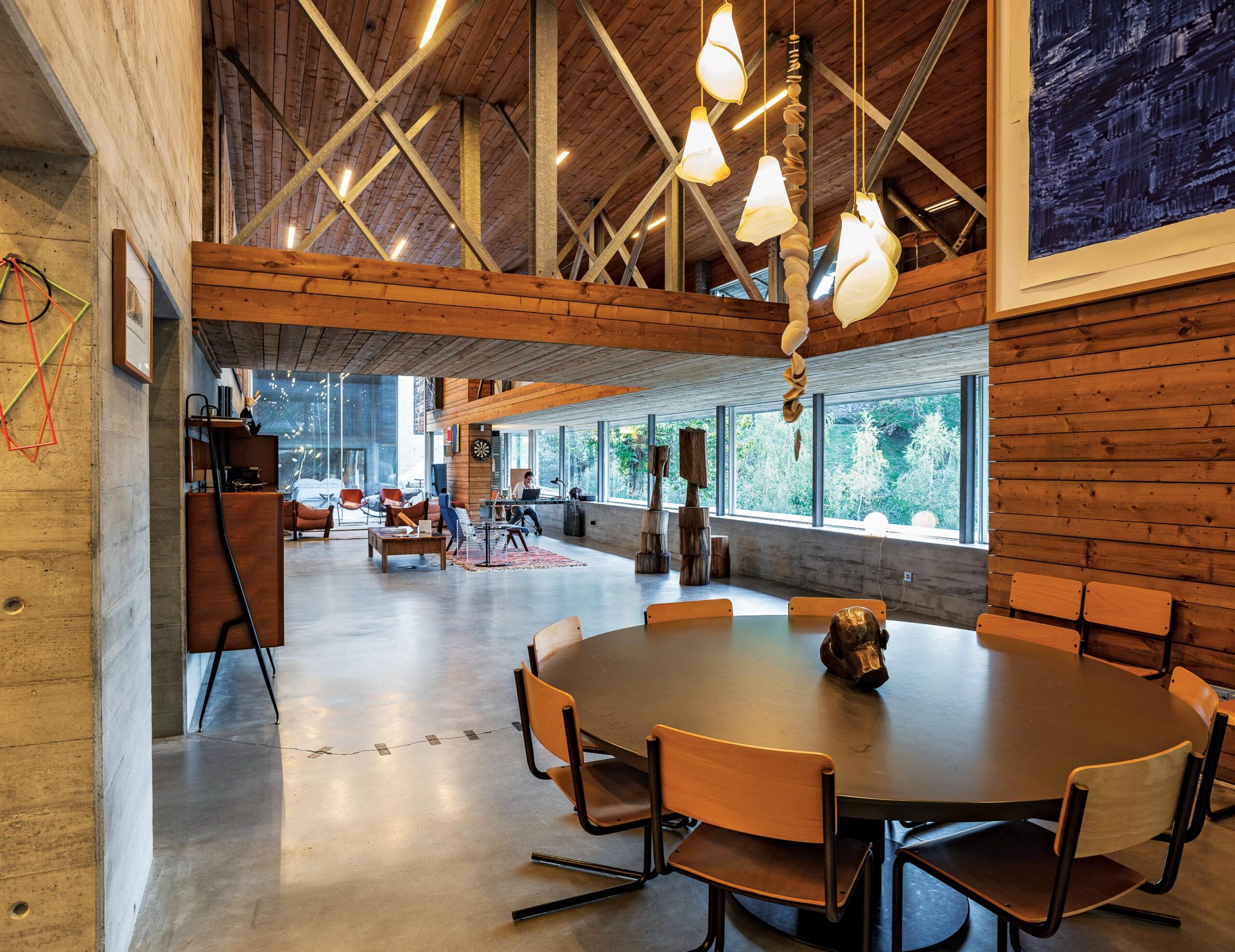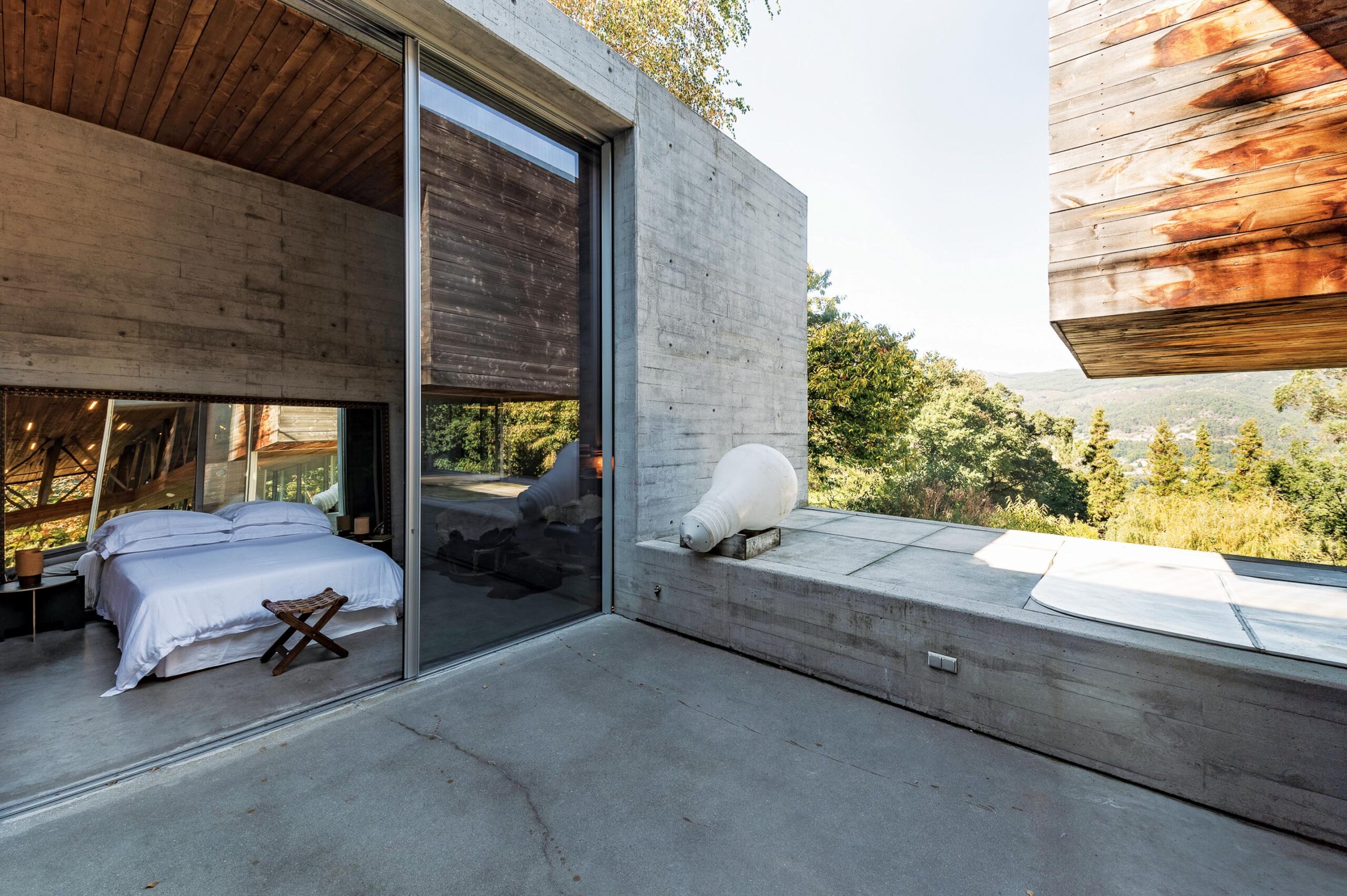
In the Far North of Portugal, Otiima House Framed by a Woodland Setting, a Concrete and Timber Creation by Carvalho Araújo Opens Its Doors to Travelers
Increasingly on the map as a destination for design enthusiasts, Portugal is steeped in ancient and historically significant edifices, and—in what might be a revelation to those new to this part of the world—dynamic modern design. With the likes of architects CVDB and Pritzker Prize-winner Eduardo de Moura contributing works of fascination to this age-old landscape, Portugal is in a vibrant current moment. Add to their ranks the architecture of Carvalho Araújo, the practice behind one of Portugal’s most talked-about buildings, Otiima House.
Originally designed as a family residence for José Maria Ferreira, Otiima House is a product of Portugal’s striving architectural ambitions and diversity. Featured on the BBC program The World’s Most Extraordinary Homes, it is located in the country’s heavily wooded north, an area known for its natural beauty and high altitude.

Built to capitalize on the former and withstand the latter, the hillside home is hidden away, dwelling in the thick of a forest, an inscrutable structure with an elemental quality.
Otiima House comprises two volumes: the first is a colossal concrete platform that grounds the house. The second, appearing to float above it, is a more lightweight timber, glass and steel form. Together, the house is a sight with few rivals. One of them, however, comes after descending a stone staircase to the entrance of the house, a path that smartly conceals the view only for the main space to reveal it in spectacular fashion via a large “ribbon window”—as coined by Le Corbusier—that stretches gloriously across the home’s façade.

The scale of the double-height main space is breathtaking. But even in its enormity, amplified by an exaggeration of glass, the environment is cozier than one expects. Drawing its warmth from a soft, autumnal-toned color palette and simple organic textures reflecting shades of the landscape, the space is marked by openness yet thoughtfully zoned into more intimate and informal areas by vintage furnishings.
A space abundant in organic beauty allows for stylistic austerity and decoration throughout the house shows an intentionally light hand. The theater lies in the architecture, the views, and the natural light. There is, however, a few artistic statements, all from Ferreira’s personal collection, including an unframed canvas by Dario Alvarez Basso displayed on a concrete wall.

Rooms that are styled as centerpieces in most contemporary homes are subordinate to the main space in Otiima House. The kitchen, for example, while impeccably up to date, is comparably basic, certainly of a lower key. It is not situated at the heart of the house, nor is it even immediately visible from the main space.
Tucked behind the dining area, it is a happy afterthought, more straightforward and essentialist than showpiece. Overhead, though, a single shaft of light streams into the kitchen, highlighting the simple beauty of utility and the power of a transcendent architectural intervention.

Bookending one end of the main space, glass doors as tall as the sky make for an absolute spectacle. Functionally, they are the connective tissue binding the main building with the self-contained master bedroom suite. Separated by a small courtyard, the spaces owe their alliance to this transparent feature, but the master bedroom enjoys complete privacy. Height in the bedroom remains a highlight—and then some. The ceiling absolutely soars.
While the main space is expansive, the mezzanine level, which houses the guest bedrooms and baths, is a contraction in volume and a contradiction in character. Opposites do attract, however, and never is that truer here. The mezzanine is more industrial, evidenced by an unrefined steel frame and exposed bolt heads.


Fashioned as modern cabins, the bedrooms are lined in timber with massive yet simple wood shutters. The windows themselves are more complex, as the owner Ferreira has business interests in a company specializing in high-tech frames and glass.
Of the experience living in this masterfully architected concoction, Ferreira told the BBC: “It’s fantastic because the house is very flexible. It’s creative. It can transform itself. It can easily be configured in different ways and into different environments.”



As a house that also changes with the seasons, he added, “You can open it up, close it in, host large or small groups. Living here with the family is always interesting.”
The house is compelling outside, as well, set on calming, almost sacred-like grounds filled with the tranquil sounds of nature. Guests would lose themselves entirely to this setting were not stone stairs and a natural spring there to lead them to the pool, whose stillness lingers in the shade of weeping willows. Also here, a vegetable garden, fruit trees and a chicken coop keep the kitchen stocked with a bounty of fresh local sustenance.

Now available to rent via nice2stay—a prize in the agency’s hand-picked collection of contemporary vacation homes—Otiima House is a welcome departure from the typical. Even more so from the cares of the world.
nice2stay | nice2stay.com
Images: João Lopes Cardoso and Juan Rodriguez




